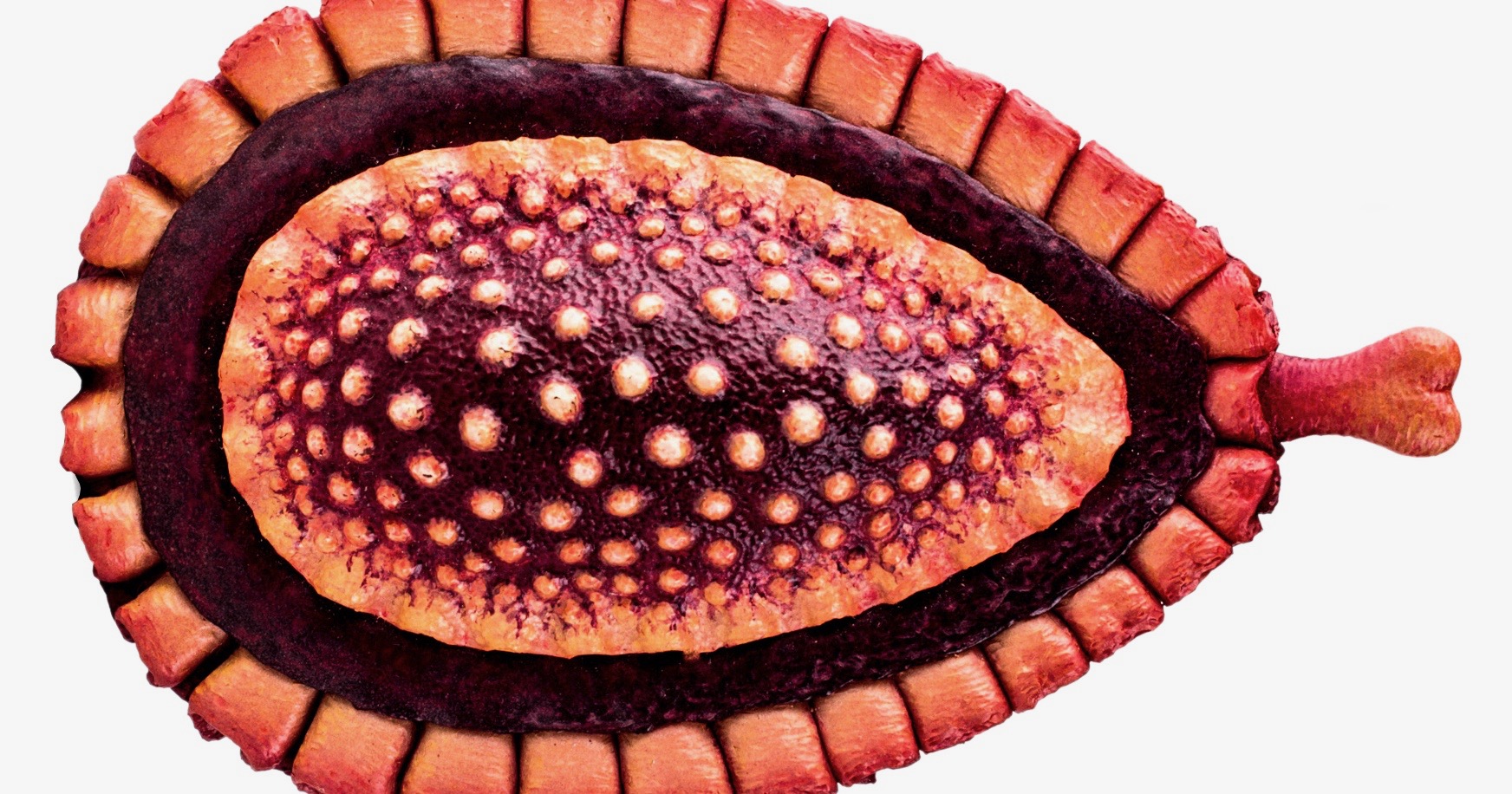 Evolution
Evolution
Kimberella — The Oldest Radula (Not)

Editor’s note: We are delighted to present a series of posts by paleontologist Günter Bechly on the Ediacaran organism Kimberella. If identified as an animal, it would “predate the Cambrian explosion of bilaterian animal phyla as a kind of ‘advance guard.’” The question is of interest for debates about evolution and arguments about intelligent design raised by Stephen Meyer, among others. Find the full series about Kimberella here.
Some authors have thought that Kimberella did indeed possess a true radula, like mollusks (Seilacher 1997, 2007, Smith 2012, Vinther et al. 2012, Stöger et al. 2013, Vinther 2015). Seilacher (1999) said that “the tracefossils … record a bilateral radula and its usage in pendulum grazing, which is definitely a molluscan feature.” Seilacher & Hagadorn (2010) concluded that the trace fossil evidence and “the inferred morphology of Kimberella … indicate that such key crown-group mollusk features as a radula and muscular foot had already evolved before the Cambrian.” The latter authors therefore reconstructed (see their Figure 2) the feeding apparatus as a typical molluscan radula.
Based on the descriptions by Fedonkin and Ivantsov mentioned below, Smith (2012), who described the radula-like mouthparts of the possible Cambrian stem mollusks Odontogriphus and Wiwaxia, still suggested that the “first fossil evidence of a radula-like organ comes from scrape-marks left by the putative Ediacaran mollusc Kimberella” and even considered it to be a stereoglossan radula.
Nevertheless, Fedonkin (2003), Fedonkin et al. (2007b) and Ivantsov (2010b) observed that the fan-shaped clusters of paired scratches instead of meandering loops, as well as the reverse movement documented by the absence of crawling over previous scratches, “excluded interpretation of these scratches as the traces left by a radula in its classical sense.” Thus, these leading experts on Kimberella did all not believe in a homology of its inferred teeth with the radula of mollusks.
A Problem for Interpretation
A severe problem for the interpretation of the Kimberichnus traces as produced by a radular grazing organ is the fact that these traces occur in concentrically radiating fan-shaped pairs, while the molluscan radula is an unpaired organ (Ivantsov 2013). Likewise, Butterfield (2006) found that the structure of the traces associated with Kimberella make it “questionable whether a two-rowed (or even a four-rowed) feeding apparatus could work in any way analogous to a belt-like radula.” The reconstructed movement of Kimberella is backwards in the direction of the aboral end (Fedonkin et al. 2007b, Ivantsov 2009, 2010b, 2012, 2013, Gehling et al. 2014, Grazhdankin 2014, Parkhaev 2017: fig. 2B), away from the scratch marks, which is again a totally unknown behavior in mollusks. Indeed, Kimberella had a “very unusual mode of grazing. Modern molluscs (and cows) move their heads to the left and right while grazing and crawl a step forward after every swing. Kimberella, however, stayed in place and foraged with the mouth at the tip of a retractable trunk” (Larson 2020).
It is noteworthy that Martin Brasier (2009: 161), who is one of the world’s leading experts on Ediacaran fossils, cautioned that “a much less exciting, and therefore less examined, explanation is that these ridges are simply partial moulds left behind by microbial filaments, by protozoans or even by decaying Dickinsonia.” Budd & Jensen (2017) agreed that “remain sufficient uncertainties in the interpretation of the fan-shaped ridges that a non-trace fossil interpretation should not be discarded.” That should give at least some reason to pause.
Triassic Kimberichnus
Finally, there is a strange fact that shows that any interpretation of such trace fossils has to be taken with a grain of salt. Knaust (2015) described grazing traces of the Kimberichnus teruzzii type from Middle Triassic microbial matgrounds of the “Muschelkalk” in Germany and the Netherlands. Being more than 200 million years younger, these traces of course cannot be attributed to Kimberella, so that the author speculated that gastropods or the cephalopod Germanonautilus could be the most likely candidates as trace-makers, although he could not rule out other groups of animals, such as annelids, arthropods, or even fish.
Next, “Kimberella and Controversial Relationships — A Chronological Synopsis.”
